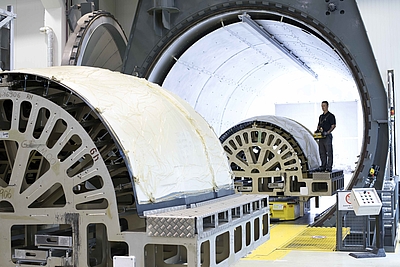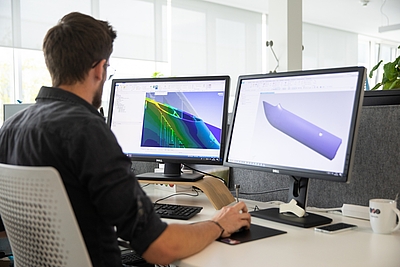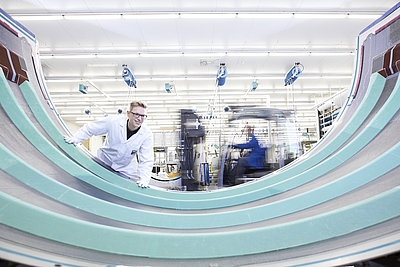"Lightweight is an interdisciplinary key technology for sustainability"
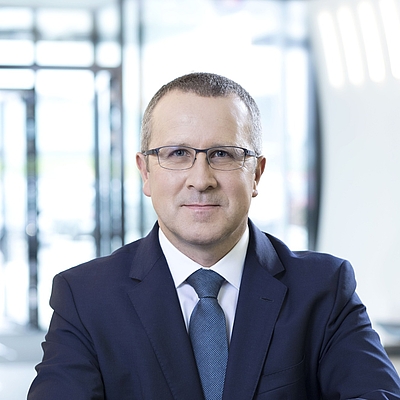
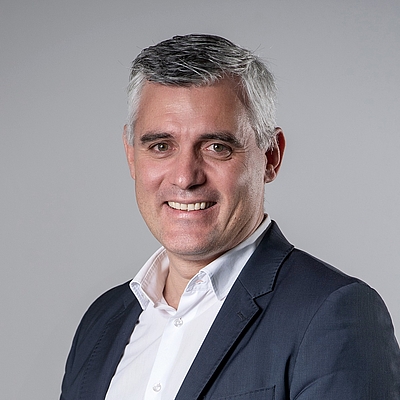
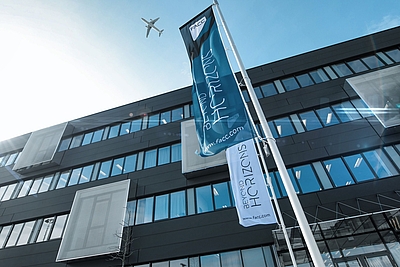
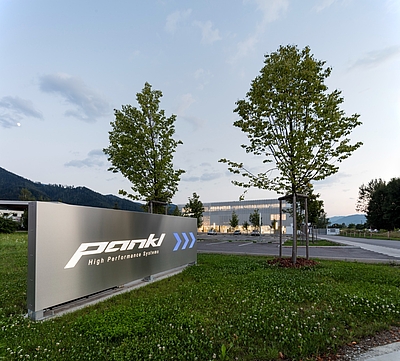
16.03.2022
A2LT, the Austrian Lightweight Construction Platform, is a success story. As the platform‘s spokesperson, Robert Machtlinger, the CEO of FACC, initiated and shaped the reorientation of the content with a focus on sustainable, affordable and intelligent lightweight construction. As the new platform spokesperson, Stefan Seidel, the CTO of Pankl Racing Systems, was already intensively involved in this and will now operatively implement the roadmap. In this interview, the two "Sirs" of lightweight technology talk about their motivation, their philosophy, and the benefits of A2LT.
What prompted you to get involved in the A2LT platform as the advisory board spokesperson?
Machtlinger: Lightweight construction is an interdisciplinary technology with many facets and fields of application. The use of different lightweight materials and optimal manufacturing processes is the only way to achieve the best possible results. The A2LT is an association of all the leading companies in Austria in the lightweight technology environment. We see it as our task to constantly improve networking in this environment – after all, success relies on cooperation.
Why did you take on the role of advisory board spokesperson for the A2LT platform?
Seidel: The A2LT has become an important consortium of leading technology companies that focus on innovation and lightweight construction. Taking on the role of advisory board spokesperson in such a consortium is a very exciting challenge. This also means defining the future orientation of A2LT, especially with regard to sustainability and digitalisation, as well as being the central hub for national lightweight construction agendas.
How does this benefit your company and the A2LT companies?
Machtlinger: Innovation thrives on exchange and cooperation. We need to learn from and with one another and exchange ideas on new developments to be successful in Austria, but also as an industry in general. Looking beyond the proverbial horizon is also an important way for us to broaden our outlook. Often, an interdisciplinary view opens up completely new perspectives.
Seidel: The focus on establishing the A2LT as a central, interdisciplinary interface for lightweight construction topics adds enormous value for all of the companies involved in the A2LT. On the one hand, it enables us to secure more funding and to push ahead with joint research projects, which further consolidates our role as a technology leader; on the other, it also boosts the visibility of the products and member companies.
The A2LT position paper is entitled "Roadmap for Sustainable, Affordable, Intelligent Lightweight Construction as an Austrian Field of Strength". What is your position on this?
Machtlinger: Lightweight construction is one of the key technologies that will help us to support our ambitious climate and sustainability goals as an industrialised country. The position paper precisely specifies the key topics here with the aim of making Austrian lightweight construction technology even more innovative than it already is. We support this agenda, and I can only emphasise how decisively lightweight construction will support the transformation process, especially in the mobility sector. Because lighter also means more efficient. This gives us immense leverage, especially in terms of sustainability. As a high-tech country, it is a great opportunity for us to be successful internationally with new developments.
Seidel: Austria is the home to many leading technology enterprises from a wide range of industries, many of which are involved in lightweight construction. The A2LT offers a robust platform for networking, exchanging ideas and jointly promoting lightweight construction. Since the topic of lightweight construction is also increasingly finding its way into large-scale series production applications, the topic of cost effectiveness is also increasingly coming to the fore. If you want to be successful, it is not only important to be ahead in terms of the technology, but also to have attractive pricing. Besides this, it is also important to adopt sustainability and digitalisation trends into production processes and products. In this context, the topics of sustainability and digitalisation in particular shift into the limelight, and they need to be addressed if you want to become or remain a leading international player in the lightweight construction sector. We must not see the topic of "lightweight construction" as a single discipline, but rather as a concatenation of skills from the widest imaginable field in order to form a basis for establishing efficiency. And the platform offers great preconditions for this.
Where do you see the strengths of the Austrian lightweight construction players?
Machtlinger: Our strengths lie in great diversity in terms of the overall system. We have companies that are technology leaders in the materials, semi-finished product, process and finished product environment. On top of this, there is excellent collaboration between companies, research facilities and universities. The A2LT is a wonderful example of this. In combination with state-ofthe-art manufacturing methods and highly qualified personnel, we are an international lighthouse for innovative lightweight construction technologies.
Seidel: There are many strengths. First and foremost, one must emphasise the well-founded technical education offered by Austrian universities. This high scientific standard significantly shapes lightweight know-how and research fields in the enterprise. Beyond this, the global orientation of many partner companies is a competitive advantage – many A2LT members are global leaders in their market segments. Many companies have also already made great progress in the area of sustainability and have created a solid basis.
And where do you see the biggest challenges?
Machtlinger: Austria is a technology exporting country – many of our customers value our products because we offer solutions that are only available in Austria. We need to expand and promote this important asset in a focused and forward-looking way. Our strategy must be to focus on high-tech and innovation, and that requires openness to technology and research. It is therefore both a task and a challenge for us to lay out the roadmap at an early stage and in many areas. From research into new materials and processes through to training the workforce. This is the only way for us to sustainably secure our position on the international market.
Seidel: In order to be able to take the technological lead in the future, the required investments must be made in the right places. This is only possible in cooperation with politics. The right use of funding instruments is important in order to avoid jeopardising this pioneering role. Also, digitalisation offers companies many opportunities and great development potential, but it also means shifting from core business to new technologies. One major challenge will be for companies to find their focus in this field in order to pursue new strategies in a targeted way.
The EU‘s Green Deal focuses on the transformation of the economy towards more sustainability. What role does lightweight construction play here?
Machtlinger: In the mobility industry in particular, there is no alternative to lightweight construction when it comes to sustainability. The CO2 savings potential is enormous – because low weight means lower energy requirements in operation. New manufacturing processes such as 3D printing, where materials can be built up, for example, in bionic structures, significantly reduce the amount of material required.
Seidel: Lightweight is indisputably a key technology for making many branches of industry more sustainable, since it saves resources in production on the one hand, while also enabling sustainability in the use of the products on the other. Lightweight construction plays a particularly important role in the transport sector. This is why lightweight solutions will significantly influence the mobility concepts of the future.
Which trends, technologies and research areas could accelerate this development?
Machtlinger: The trend is towards a holistic ecological appraisal of technologies – in other words, assessing the sustainability of the way in which the materials are produced, of the product itself, its ecological footprint during operation and its recyclability at the end of the product‘s service life. Besides this, the technologies must be cost-effective and affordable. I am confident that we can meet societal and political expectations if the technology is open. The A2LT roadmap combines all of these factors – we need sustainable, affordable and intelligent overall systems to provide the best possible solution for technology deployment in both existing and new applications.
Seidel: Irrespective of the drive strategy or means of transport: integrated lightweight components mean that less mass has to be moved. Conversely, less energy is used for locomotion. This means that lightweight construction has a significant influence on all mobility solutions. What is decisive here is focusing not only on the individual parts, but on the benefits of lightweight construction solutions in the overall system. In the future, CO2 savings must be taken into account when parts are evaluated. This is the only way for us to more strongly establish new technologies, which have not previously offered attractive pricing, on the market. The industrialisation of cutting edge manufacturing processes such as 3D printing will be an important aspect in rolling out innovative lightweight construction solutions on a broad scale on the market.
Why is cooperation so important in lightweight construction?
Machtlinger: Lightweight is an interdisciplinary field of innovation. The different strategies and methods for optimisation range from the development of new materials to new manufacturing processes or optimised component structures. Which approaches are ultimately successful for your own product depends on a variety of factors. In line with this, it is important to know which technological developments are currently in the pipeline in order to then draw on specialists in each case and exchange ideas with one another.
Seidel: It is the combination of materials, design and production technologies that forms the basis of lightweight construction. It is essential for the right materials to be available for a design and producible in a sustainable, resource-saving and affordable way to be able to roll out innovative solutions on a broad scale. The rapid further development of both materials and production options makes it increasingly difficult for individual companies to cover the entire range on their own. As a result, it is becoming increasingly important to enter into cooperations in order to ensure technological leadership in all partial aspects. And this is precisely the basic idea behind A2LT: it networks companies from a wide range of industries in order to provide the basis for sustainable, affordable and intelligent lightweight construction.
Where do you see other lightweight construction focus sectors beyond mobility?
Machtlinger: The construction industry in particular is benefiting from the lightweight trend as the demand for materials is particularly high here. However, lightweight construction is generally an interdisciplinary topic that plays a role almost everywhere.
Seidel: Lightweight construction is finding its way into many aspects of our daily lives. Mobility is certainly one essential area, but lightweight also offers a huge amount of potential in plant engineering, as it does in the construction industry and all the way up to the aerospace industry. Aerospace in particular will also be increasingly important in the future, as this industry is expecting a significant growth curve and every gram of weight saved has an enormous impact.
What are you currently working on at FACC with regard to lightweight construction?
Machtlinger: We live lightweight construction in every one of our products and every one of our developments – and we have done so since FACC was founded. Lightweight construction is firmly anchored in our DNA. Currently, we are particularly proud of the fact that we have the privilege of developing the lightweight technologies for the next generation of aircraft in cooperation with our customers. The bandwidth here extends from the development of 100 % recyclable aircraft structure components to the development of biological raw materials. Our goal is to significantly reduce manufacturing costs in lightweight construction, to be CO2-free in the environment of industrial FACC manufacturing by 2040 and, by doing so, to support the implementation of our customers‘ and the industry‘s goals in the best possible way. The SPACE contract recently awarded to us by the ArianeGroup shows that our research expenditures are paying off. Looking forward, this is an important topic for us, and one that we have defined as a new business field in our Corporate Strategy 2030. This is where we, in the best possible way, can bring to the table the FACC composite technologies that we have developed for the aviation industry over the past decades.
What are you currently working on at Pankl Racing with regard to lightweight construction?
Seidel: At Pankl, we also constantly strive to optimise our products with innovative materials and new designs to give our racing customers a competitive edge. The technologies are subsequently industrialised in order to also establish them in large scale production in the automotive field. To do this, we rely on our state-of-the-art inhouse manufacturing processes, such as metallic 3D printing in our Pankl Additive Manufacturing Competence Centre based in Kapfenberg.
